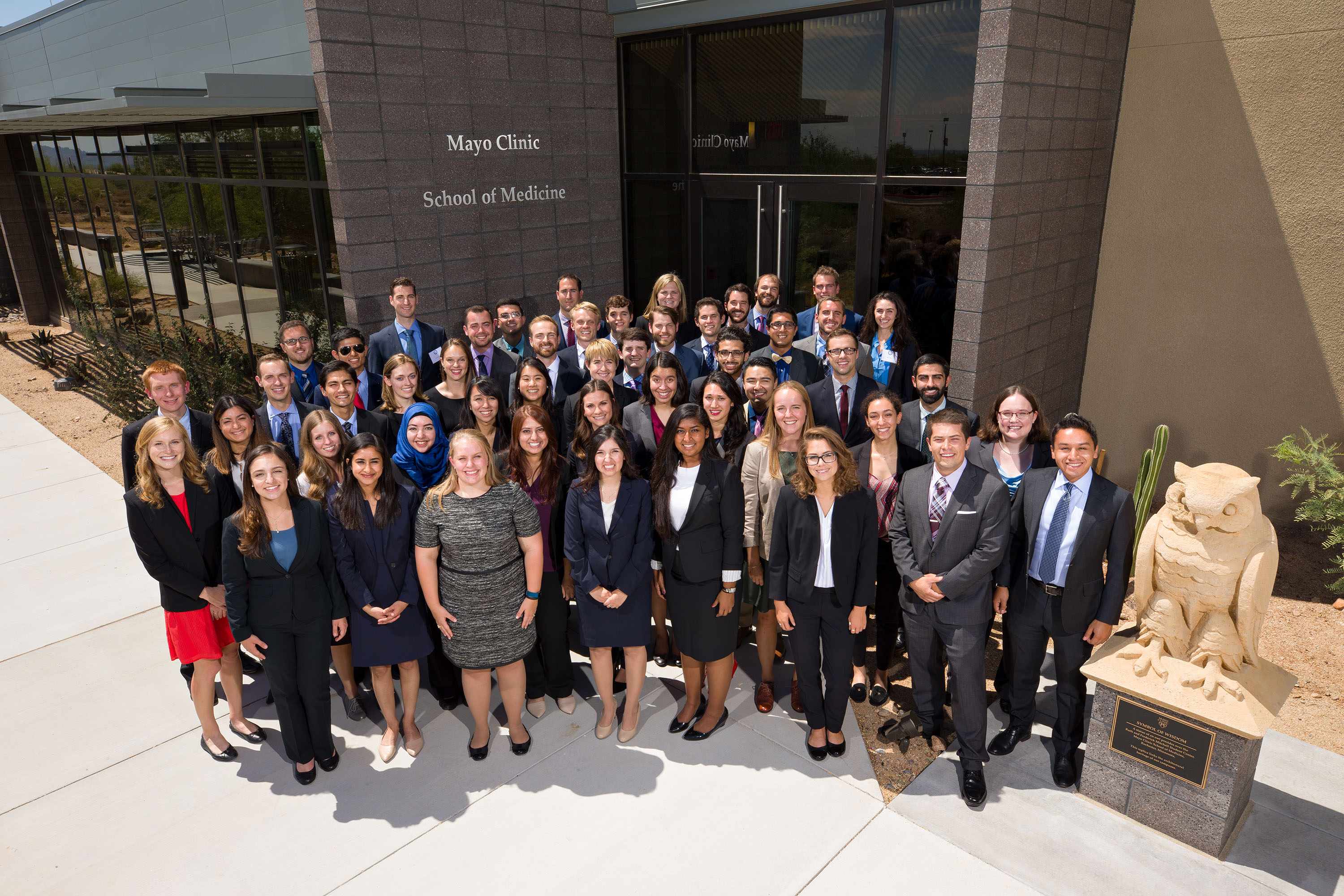-
Arizona
Mayo Clinic School of Medicine gives medical education a new twist
ROCHESTER, Minn. – According to the Association of American Medical Colleges, there are more than 140 medical schools in the U.S. fully accredited by the Liaison Committee on Medical Education, and more seem to be cropping up regularly. So what can medical schools do to ensure their students are competitively well-prepared for residency training, the uncertainties of the ever-evolving health care system and the future of patient care?
Mayo Clinic School of Medicine thinks it might have a solution that begins with a unique model of a national medical school and entails its revamp of the traditional medical education.
This relatively small school originally established in Rochester, Minnesota in 1972 sits in the shadows of its parent organization: Mayo Clinic. For almost 45 years, the four-year M.D. training program purposefully kept its class size to around 50 incoming students per year to ensure highly skilled, individualized instruction with one of the highest faculty-to-student ratios in the country. The school chose not to balloon the size of its classes in Rochester. Instead, the medical school expanded its footprint nationally to Mayo Clinic’s campuses in Scottsdale, Arizona, and Jacksonville, Florida. Unlike many schools that have multiple campuses with separate governance and curriculum, Mayo Clinic School of Medicine chose to go a different route: one national medical school, centralized governance and shared curriculum spanning all campuses.
Besides its original campus, this July Mayo Clinic School of Medicine – Arizona Campus opens its doors to an inaugural class of 50 first-year students. The total student body in Arizona will mushroom to 200 when the full four-year program finishes implementation in 2020. The school’s Florida campus is launching third-year and fourth-year programs, with hopes of expanding its Florida campus to a full four-year program in a few short years.
Mayo Clinic’s national medical school model enables students to receive the same learning experiences in basic and clinical sciences at their home campus, but travel among campuses for career exploration, research opportunities, clinical rotations and clerkships across multiple specialties.
“Imagine being able to learn at not only the No. 1 hospital in Arizona, but a No. 1 hospital in Florida and the No. 1 hospital in the nation in Rochester,” says Fredric Meyer, M.D., executive dean of education, Mayo Clinic. “Students will bring that knowledge back to their home campus and community. It will also strengthen their learning foundation for residencies, as our goal is to give our students unique learning experiences with many diverse patient populations across multiple care settings.” Dr. Meyer is the Juanita Kious Waugh Executive Dean for Education and dean of Mayo Clinic School of Medicine. Another innovation across Mayo’s national medical school is the addition of courses in the science of health care delivery that were developed jointly with Arizona State University (ASU) and integrated into the national medical school’s curriculum. Under the Mayo Clinic and Arizona State University Alliance for Health Care, medical students across all Mayo Clinic campuses will be the first in the nation to receive a certificate in the science of health care delivery jointly conferred with ASU, along with their medical degree from Mayo Clinic. The enhanced education covers areas such as person-centered care; population-centered care; high-value care; team-based care; health policy, economics and technology; and leadership. Students have the added option of pursuing a master’s in the science of health care delivery online through ASU.
Dr. Meyer explains that these curricular innovations in medical education won’t transform health care unless they’re broadly shared. For the past five years, Mayo Clinic School of Medicine has been involved with the American Medical Association’s Accelerating Change in Medical Education consortium, working closely with other consortium members to modernize medical education nationally.
Dr. Meyer notes that this expanded curriculum is necessary to prepare future physicians for the challenges of the evolving health care environment and the knowledge needed to improve the quality and value in health care. The school also is building collaborations with universities for dual-degree options, such as health informatics, biomedical diagnostics, global health, business administration and law.
Mayo Clinic School of Medicine’s updated medical education model also includes specialized training in physician wellness and resiliency to prepare future physicians for the rigors of clinical practice and prevent burnout – a growing concern nationwide.
Expansion and fast-forwarding changes to traditional medical education across campuses thousands of miles apart can have its challenges. Dr. Meyer shares that open communication, a shared belief in academic excellence and the bonds of highly collaborative leadership teams, faculty and staff are critical to this model of education.
Journalists: Broadcast-quality video B-ROLL (3:12) is available in the downloads.
###
About Mayo Clinic School of Medicine
Originally established in Rochester, Minnesota in 1972, Mayo Clinic School of Medicine is ranked among the top 20 medical schools in the nation by U.S. News & World Report. A national medical school with campuses in Arizona, Florida and Minnesota, it is considered one of the most highly competitive, but affordable medical schools in the country for admittance. The expansion to a national medical school gives the school the ability to deliver extraordinary medical education and highly diverse clinical experiences to students across all Mayo campuses.
About Mayo Clinic
Mayo Clinic is a nonprofit organization committed to clinical practice, education and research, providing expert, whole-person care to everyone who needs healing. For more information, visit mayoclinic.org/about-mayo-clinic or newsnetwork.mayoclinic.org.
MEDIA CONTACT
Matthew Brenden, Mayo Clinic Public Affairs, 507-284-5005, newsbureau@mayo.edu








